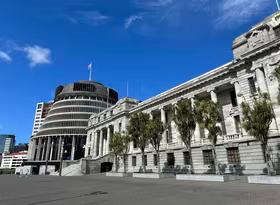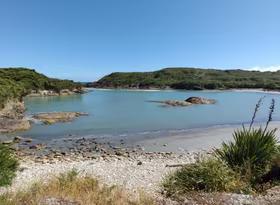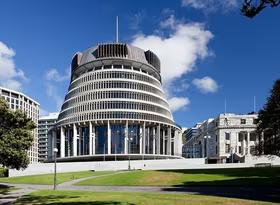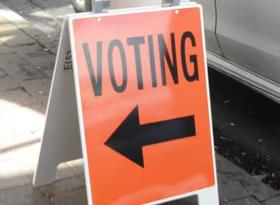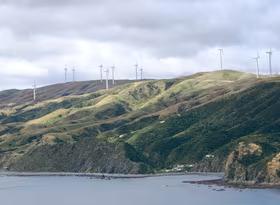Fairness must dictate our emissions policy
Like it or not, New Zealand has ratified the Kyoto Protocol, which means that we need to either reduce our net emissions of greenhouse gases (primarily carbon dioxide, methane and nitrous oxides) back to 1990 levels, or purchase emission permits from another country under an international emissions trading scheme. It seems likely that the latter scenario will eventuate.
If the government introduced no domestic policies to reduce emissions it would be responsible for purchasing a sufficient number of emission permits from offshore. Effectively then, taxpayers pick up the bill and there is no incentive for anyone in New Zealand to reduce emissions. Is there a more efficient and more equitable way for us to meet our international obligations?
The best way to encourage a reduction in emissions is to discourage the use of products that contain relatively high amounts of greenhouse gas emissions — electricity (from thermal generation), aluminium and steel products, cement, dairy products, some forestry products and of course most forms of travel. This is most simply accomplished by introducing a tax one missions. A tax on emissions generates certainty around the price of emissions, but does not guarantee that any given emissions reduction target would be met. However, even if a tax has no effect on emissions, it is still fairer to put the cost of emissions on those who cause them than to put the cost on taxpayers generally.
It seems likely that the government will not introduce a tax on emissions, opting instead for an emissions permit trading system. Under such a system the total amount of emissions is capped, and emitters need to buy permits to cover their emissions. The price certainty of a tax is exchanged for quantity certainty. Which would you prefer?
When emissions trading schemes have been introduced overseas, it is usual for governments to give permits to emitters, rather than selling or auctioning them to the highest bidders. While under certain conditions free allocation can deliver the same reduction in total emissions, the wealth distribution effects are very different, with major emitters being the biggest beneficiaries. Why would a government do this?
Political considerations aside, there are two reasons. Fairness is one. In the past businesses have invested on the basis that greenhouse gas emissions were free. Subsequently imposing a price on emissions could reduce the value of such investment, perhaps leading in some cases to stranded assets — structures and equipment that are specific to a certain industry rendered less competitive by an emissions price. An example might be a coal-fired power station or a dairy farm, but it is unlikely that the whole asset would become stranded. A small reduction in value is more likely. Even then, however, optimal compensation is via a once-only free allocation of emission permits equal in value to the change in asset value. There is no economic basis for ongoing free permit allocation. Note too that new firms should receive no free allocation, as they have no assets at risk. Also, existing firms that do receive compensation should still receive it if they close. Their compensation is for a lower value of assets, not for lost production.
The second reason why a government might distribute emission permits for free is to protect industries that compete, either in New Zealand’s domestic market or in export markets, with industries based in countries that do not have a price on greenhouse gas emissions. For example, an emissions price might make cement produced in New Zealand uncompetitive compared to imported cement. If this led to lower output from, or even the closure of New Zealand cement plants, offshore plants would increase production — a process frequently referred to as "carbon leakage". New Zealand would more easily meet its Kyoto obligation, but global emissions would not change — hardly the actions of a responsible global citizen. Furthermore, an industry once lost to New Zealand might never be re-established, even if at some point in the future most countries impose a price on emissions. Without empirical analysis we simply cannot say which industries are worth protecting from an emissions price and which should simply be allowed to wither.
What we can say though, is that if protection is warrant edit needs to be structured to protect output, not emissions, as it is the potential loss of output that is the problem. This immediately suggests an ongoing free allocation of permits that is linked to output, given some reference amount of emissions intensity; that is, the quantity of emissions per unit of output. The reference level could be set with respect to some base year, or with respect to world best practice (for that industry), or it might include a prescribed path of declining emissions intensity. Given a link to output, any firm that closes would not receive further compensation, in contrast to the stranded asset scenario discussed above.
It is unlikely that there will be industries in which 100% of output is at risk from a price on emissions. Only basic commodities that compete entirely on price would be at risk. Given this, and the likelihood of few stranded assets, if the government does introduce an emissions trading scheme we would expect to see most permits auctioned, not given away.
And if the auctioning of permits leaves some revenue after the government has purchased whatever number of permits it needs from offshore to cover New Zealand’s excess emissions, there are some interesting options for use of that extra revenue. Depending on the government’s policy decisions we will cover these options in a future column.
